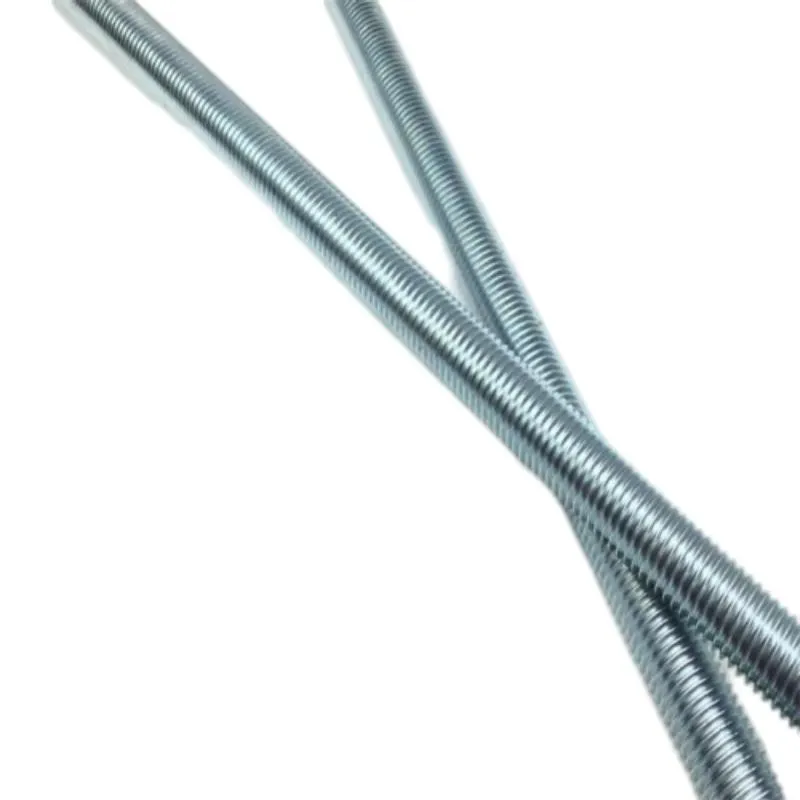Nov . 10, 2024 06:23 Back to list
M16 x 1.5 Threaded Rod Specifications and Applications for Industrial Use
Understanding the M16 x 1.5 Threaded Rod Specifications and Applications
The M16 x 1.5 threaded rod is a crucial component in various engineering, construction, and mechanical applications. Designed to meet specific dimensional and tolerance standards, this rod's unique specifications make it suitable for a wide array of projects where robust fastening solutions are required. In this article, we will explore the characteristics, materials, and applications of the M16 x 1.5 threaded rod, shedding light on its importance in modern engineering practices.
Specifications of M16 x 1.5 Threaded Rod
The designation M16 x 1.5 indicates that the rod is metric in size, with a nominal diameter of 16 mm and a thread pitch of 1.5 mm. This means that each complete revolution of the screw will move it forward 1.5 mm along its length. The M signifies that it is a metric thread, compliant with the ISO (International Organization for Standardization) standards.
Typically, the M16 x 1.5 threaded rod has a length that can vary depending on specific requirements, with common lengths ranging from 1 meter to 3 meters. The threading on the rod can be either full-length or partially threaded, offering flexibility depending on the fastening needs.
Materials Used
The M16 x 1.5 threaded rod can be manufactured from a variety of materials, allowing for customization based on environmental conditions and load requirements. Common materials include
1. Steel Often treated for corrosion resistance, steel rods are widely utilized in construction and heavy-duty applications due to their strength and durability. 2. Stainless Steel Ideal for environments that may be exposed to moisture or chemicals, stainless steel rods resist rust and corrosion, making them suitable for marine applications and food processing industries. 3. Alloy Steels For applications requiring higher strength, alloy steel rods are available that can bear significant loads and withstand extreme conditions. 4. Plastic and Composites In specific environments, non-metal threaded rods are produced from strong plastic materials or composite materials that offer unique advantages such as insulation and resistance to chemicals.
m16 x 1.5 threaded rod

Applications
The versatility of the M16 x 1.5 threaded rod means it can be utilized in numerous applications, including
1. Construction These rods are commonly used as anchor bolts, coupling rods, and suspension systems in building frameworks, ensuring structural integrity and stability. 2. Automotive In the automotive sector, M16 x 1.5 threaded rods are utilized in various assemblies, including engine mounts, suspension components, and chassis attachments. Their ability to withstand high stress is critical in maintaining vehicle safety and performance.
3. Machinery and Equipment Threaded rods are essential in machinery for creating secure connections between moving parts. They are found in assembly lines, industrial machines, and manufacturing equipment.
4. DIY and Hobby Projects For enthusiasts and hobbyists, M16 x 1.5 threaded rods offer robust solutions for various DIY projects, from building furniture to creating custom equipment.
5. Renewable Energy In the renewable energy sector, such as wind turbines and solar panel mounts, strong threaded rods are necessary to resist the forces exerted by nature.
Conclusion
The M16 x 1.5 threaded rod is more than just a simple fastener; it is a vital component that contributes to the strength and reliability of numerous structures, vehicles, and systems. With its diverse range of materials and applications, understanding the specifications and uses of the M16 x 1.5 threaded rod is essential for engineers, builders, and anyone engaged in mechanical design and assembly. As technology continues to advance, the importance of high-quality threaded rods will only increase, underscoring the need for continued innovation in this fundamental area of engineering. By choosing the right threaded rod for the job, professionals can ensure not only the success of their projects but also the safety and durability of their final products.


